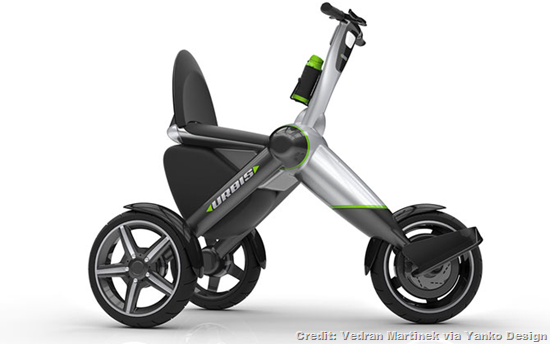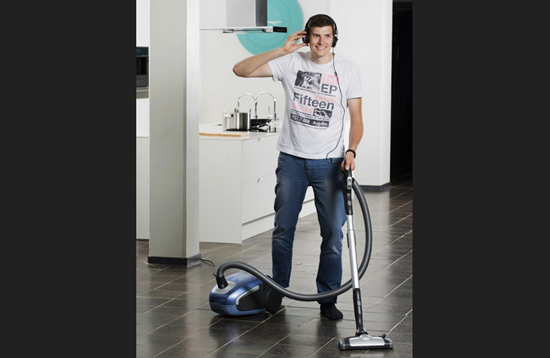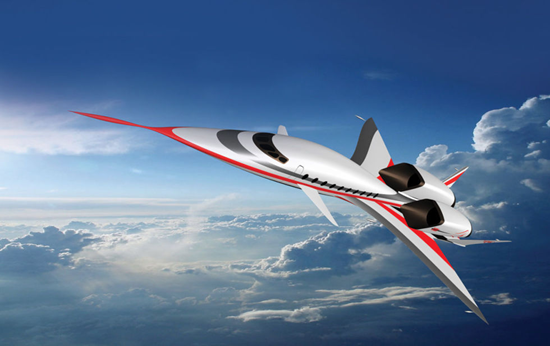
Cast your eyes over the news, and it can seem like the world is in a pretty bad place: attacks in Paris, bombings in Lebanon, Turkey nearly starting World War III by shooting down a Russian fighter jet. Sometimes, it can seem like nothing will penetrate the gloom.
But that’s not exactly the case. Look behind the headlines about fear, carnage, and death and you’ll find another, less reported world of hope, peace, and human courage. We’re not saying the world in winter 2015 is all happy fairies and pixie dust. We are saying that maybe it’s time we gave the good news a chance.
10. We’ve Halved Child Mortality Since 1990
In many ways, 1990 seems remarkably close to our own time. For one thing, there’s a good chance that the next election will repeat 1992’s Clinton/Bush face-off. In other ways, 1990 seems far away. That year, figures showed that 12.7 million children under age five died throughout the world. Fast-forward to 2015, and we’ve reduced that number to less than six million for the first time in recorded history.
That’s a 53 percent drop in 25 years, an impressive achievement by any measure. In some countries, the scale of achievement has been even higher. In Bangladesh, the infant mortality rate fell a staggering 72 percent between 1990 and 2012. In East Timor, it fell a slightly lower but still impressive 67 percent. In case those dry statistics aren’t doing anything for you, we’ll put it in more emotional terms: Thanks to our efforts as a species, millions upon millions of children are alive today who would otherwise be dead.
Still, some may consider this a failure. The UN’s goal was to cut child mortality by 67 percent by 2015, which is far below what we achieved. But that shouldn’t detract from what is still a phenomenal win for mankind and an even bigger win for children in the developing world.
9. We’ve Lifted Over A Billion People Out Of Extreme Poverty
The UN’s definition of “extreme poverty” is about as extreme as it gets. To qualify, you have to be living on the equivalent of less than US$1.25 a day - an amount that’s pitiful even in countries with unimaginably low costs of living. In 1990, nearly two billion people were caught in this extreme poverty trap, accounting for nearly half of the world’s population. Today, that number has dropped to 836 million, or less than 15 percent of the world’s humans.
This is important because life in extreme poverty really sucks. Time recently had a moving photo essay that followed children trying to live on US$1 a day. One eight-year-old girl had to spend every day digging through a toxic dump collecting scrap metal, all while crying from the unbearable pain of living with malaria. A two-year-old in India was deliberately starved into malnutrition by her parents to elicit sympathy (and thus more cash) while they were begging. All of them lived lives of deprivation that even the poorest among us couldn’t imagine.
Thanks to some awesome global teamwork, there are now nearly two billion fewer people being forced to experience such hardships on a daily basis. Those who remain are largely concentrated in five countries: India, Nigeria, China, Bangladesh, and the Democratic Republic of Congo.
8. We’re Getting Closer To Achieving Universal Education
If you want to get ahead in life, get an education. It really is as simple as that. Weekly earnings over the age of 25 rise almost perfectly in line with your level of educational attainment, which is why the recent news about education is so good. As of 2015, we’re well on our way to achieving nearly universal education.
Back in 1990, 20 percent of children in developing regions weren’t receiving any education at all. They couldn’t read, write, or even conceive of going to somewhere as exotic as a school. Today, that number stands at only 10 percent, meaning that 9 out of 10 kids in the developing world are getting the chance to drastically improve their chances in life. In some cases, the improvements have been extreme. Northern Africa, Latin America, the Caribbean, East Asia, Southeast Asia, the Caucasus, and Central Asia now have around 99 percent of their children in primary education.
In 2015, we potentially have the highest-educated global population in history. As a result, these kids are growing up to be innovators in their home countries, shaking up moribund economies, generating fistfuls of cash, and lifting many others out of poverty with them.
7. Cuba Recently Made A Major HIV Breakthrough
Despite the recently lifted US economic blockade, Cuba has always had world-class healthcare. In summer 2015, the island country demonstrated the awesome prowess of its doctors by becoming the first nation on Earth to eliminate mother-to-child transmission of HIV.
This is a breakthrough that earns the description “major.” Like syphilis, HIV has a nasty habit of infecting children in the womb. An untreated pregnant woman has a 15–45 percent chance of passing the virus on to her unborn child. When you realize that 1.4 million HIV-positive women get pregnant each year, you begin to appreciate what a problem this really is.
Since 2009, a global effort has been launched to lower these statistics. With the right antiretroviral medicines, the chances of HIV being passed on from mother to child drop to a mere 1 percent. Thanks to Cuba’s awesome doctors, that number has now fallen to literally zero.
Unfortunately, Cuba’s achievement rests on its universal, high-quality healthcare. In other words, it can’t be replicated immediately elsewhere. But the World Health Organization (WHO) still thinks that Cuba can serve as a model for other developing nations. With a bit of luck and some hard work, we may soon be living in a world where no child has to be born with this life-threatening illness.
6. The Carter Centre Is About To Wipe Out Guinea Worm Disease
Photo credit: CDC
In the whole of human history, we’ve only eradicated a single disease: smallpox. That was thanks to an expensive 14-year global immunization program by the WHO. Now another disease is about to join its lonely ranks. Thanks to the Carter Centre, we’re on the verge of eradicating guinea worm disease.
Found mainly in sub-Saharan Africa, guinea worm disease is a nasty infection. Like a tapeworm, a guinea worm grows inside you into a 1-meter (3 ft) monster. Unlike a tapeworm, the guinea worm then decides to exit your body by burrowing out of your skin. The creature’s exit takes an average of 30 days, causing massive swelling and infection in the affected area. It can emerge from just about anywhere: the roof of your mouth, your nipple, your scrotum, your butt.
Did we mention that it causes excruciating pain the entire time? If you try to ease your suffering by bathing the wound in water, the worm will lay a ton of eggs in you.
Back in 1986, 3.5 million people were infected in 21 countries. By summer 2015, that number had dropped to 126 cases in 30 villages. That’s not a typo. Barely over 100 people now suffer from guinea worm disease. The Carter Centre claims that their work will completely wipe out the disease in the next few years. Even better, they’re already planning to turn their attention to the next disease once guinea worm is finally eradicated.
5. Boko Haram Is Getting Its Ass Kicked
Photo credit: VOA
If it weren’t for ISIS, Boko Haram would have dominated news stories of Islamic extremism in 2015. The Nigerian terror group recently held a territory roughly the size of Costa Rica and spent their time massacring entire villages. Today, they’re still setting off deadly bombs in the capital and generally acting like murderous monsters. But all this fury is masking a positive development. The members of Boko Haram are getting their asses kicked.
Since incompetent President Goodluck Jonathon was replaced by Muhammadu Buhari, Nigeria has been stepping up its efforts to coordinate with Chad, Cameroon, and the US. The result has been a series of devastating strikes against the insurgent group that have crippled Boko Haram and taken back large swaths of their territory.
The Nigerian military are now saying they may totally defeat the group within a year, and for once, local officials and foreign observers agree with them. In a single raid in October 2015, 338 hostages were freed from the group’s northeastern stronghold - a far cry from April 2014 when they kidnapped 276 schoolgirls.
That’s not to say that Boko Haram is a spent force. The group is expected to continue launching attacks for a long time. But they are getting much weaker. Any chance they had of becoming another Islamic State seems to have vanished for now.
4. Islamic State Is Losing Ground
As we’ve mentioned before, November 13, 2015, the day of the Paris attacks, was an incredibly bad day for ISIS. While the world’s media was focused on France, the extremist group lost the key city of Sinjar to Kurdish and Yazidi forces, shattering the ISIS supply line between Syria and Iraq. This isn’t the only setback the group is experiencing.
Although ISIS is still a major threat and remains extremely deadly, things aren’t going as well for them as they want you to believe. In September 2015, Newsweek reported that the caliphate’s economy had been badly hit by the oil price crash. This forced the group to hit those under their control with excessive taxes, leading to a mass exodus of professionals and skilled workers - the same refugees who are now entering Europe.
As a result, ISIS’s economy is now like a rattling old car from which the engine could fall out at any moment. Public anger in cities like Mosul is growing, and the group has exhausted one of their major sources of cash - robbing Iraqi banks.
On a military level, ISIS is also in trouble. The intelligence chief of Iraqi Kurdistan recently estimated that they could be defeated in months or even weeks if Western powers engaged fully. Doubtful as that may seem, Kurdish troops are already reporting that their enemy seems significantly weaker on the battlefield. Hopefully, 2016 will be the year we consign these scumbags to the dustbin of history.
3. World Hunger Is Declining
So far in the 21st century, around 600,000 people have died from “great famines,” which are devastating famines that kill 100,000 people or more. That’s a shocking number, but we mainly mention it as a comparison point with the turn of the last century. Between 1900–1909, great famines killed nearly 27 million people.
This isn’t cherry-picking data. This is representative of how far we’ve come with tackling global hunger. Since about 1970, the number of great famines has been in terminal decline, to the point that experts now say that they’re “almost obsolete.” Famines haven’t killed more than five million people a year since the 1960s. In the first 15 years of the 21st century, they’ve only led to an average of 40,000 deaths a year.
Obviously, that’s still a shocking number. But it represents one heck of an improvement. In 1990, the International Food Policy Research Institute ranked 16 countries as “extremely alarming” on their annual Global Hunger Index (GHI). In 2015, not a single nation was featured on the GHI. Since 2000, only one country - Kuwait - has seen its level of hunger rise, and that was by a tiny margin. Globally, the level of hunger has fallen by about 27 percent in developing countries.
There is still a long way to go. For example, nearly half the population of the Central African Republic is undernourished. But we’re slowly beating global hunger, just as we are extreme poverty. In doing so, we’re saving literally millions of lives.
2. Women’s Lives Are Improving Dramatically
Living in the equality-loving West, it’s easy to forget that gender discrimination is a terrifyingly real thing in some countries. Globally, about one-third of all women still experience physical or sexual violence, and honour killings remain a depressing fact of life. Yet these sad facts mask an undeniable truth. On a global scale, life for women is improving dramatically.
Between 1990 and 2013, maternal deaths worldwide fell by 45 percent. At the same time, female life expectancy soared to a global average of 72 years. More women entered the workforce. More girls stayed in school. The age of marriage rose as child brides started to become a thing of the past. Even in the US, there have been noticeable improvements. Between 1994 and 2012, the rate of nonfatal domestic violence fell by a staggering 63 percent.
Again, there is still a long way to go. But it’s clear that the general trend is in a positive direction. It might not always feel like it when you’re reading about the latest tragic honour killing, but the world’s Neanderthals are finally starting to realize that it’s not cool to treat women as punching bags.
1. The Global Murder Rate Is Dropping Fast
With war brewing and atrocities being carried out across the globe, it can seem like we’re about to enter a new dark age of genocide and murder. However, the data doesn’t back this up. Across the globe, the chances of another human being murdering you are falling fast.
In a recent article for Slate, Steven Pinker crunched the numbers for most major forms of intentional killing. He found nearly all of them were dropping dramatically. You’ve probably heard that the homicide rate in the US and UK is falling to near historic lows, but did you know the same is true of the entire world? Although data only exists from 2000 onward and requires what Pinker calls “heroic guesstimates” for some regions, the trend appears to be downward.
Importantly, this includes countries we might think of as “scary violent.” Mexico has seen a massive uptick in its murder rate since 2006, but even this is now falling. At its recent peak, the number of homicides in Mexico still fell wildly short of the country’s past statistics. If you jumped in a time machine and went back to 1955, you’d be far more likely to be murdered than at the height of the drug war. Same deal with places like Colombia, Russia, and Brazil.
Other forms of murder are declining, too. Mass killings of civilians rose from 1945–1992 and then suddenly dropped sharply. Although this statistic has spiked again in recent years due to ISIS, the rate is still so historically low that we’re not even back to 2005 levels. Data on genocides seems to show a general decline, as does the rate of battle deaths in armed conflicts. In Pinker’s words: “The world’s civilians are several thousand times less likely to be targeted today than they were 70 years ago.”
All of this needs a disclaimer. We’re not saying that the world is all happy and safe and no one is suffering. Life in Syria, the Democratic Republic of the Congo, Iraq, and parts of Nigeria and Ukraine is difficult and often short. We’re also not saying that things couldn’t be better. But we are saying that they’re improving massively and on a global scale. Believe it or not, the world is slowly getting better. Even if it doesn’t always feel that way.
Top image: Feeding hungry children in Northern Kenya. Credit: Feed My Starving Children (FMSC)/Flickr, CC BY-ND 2.0.











































